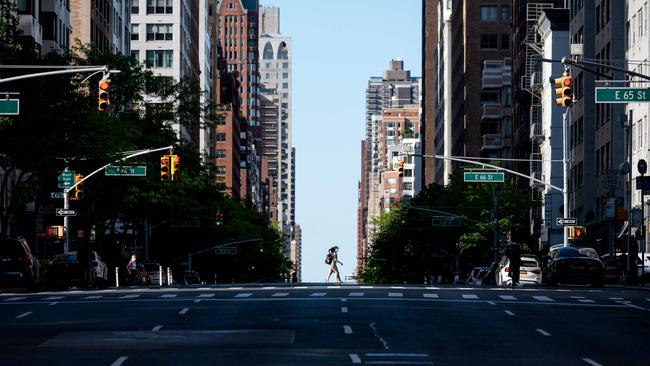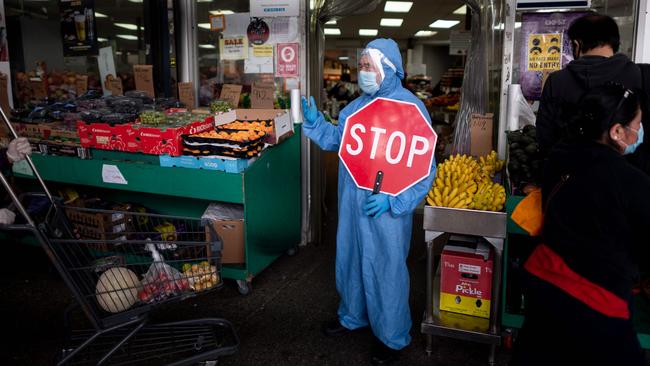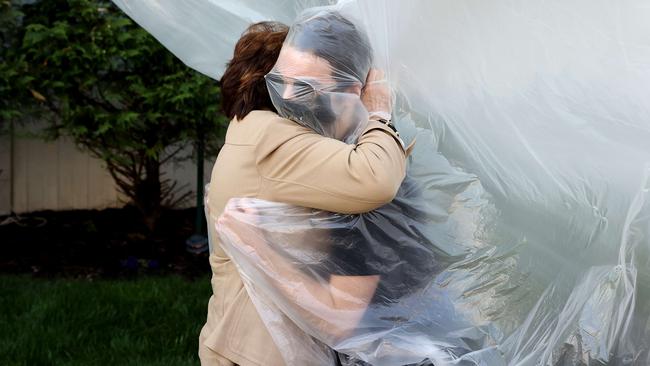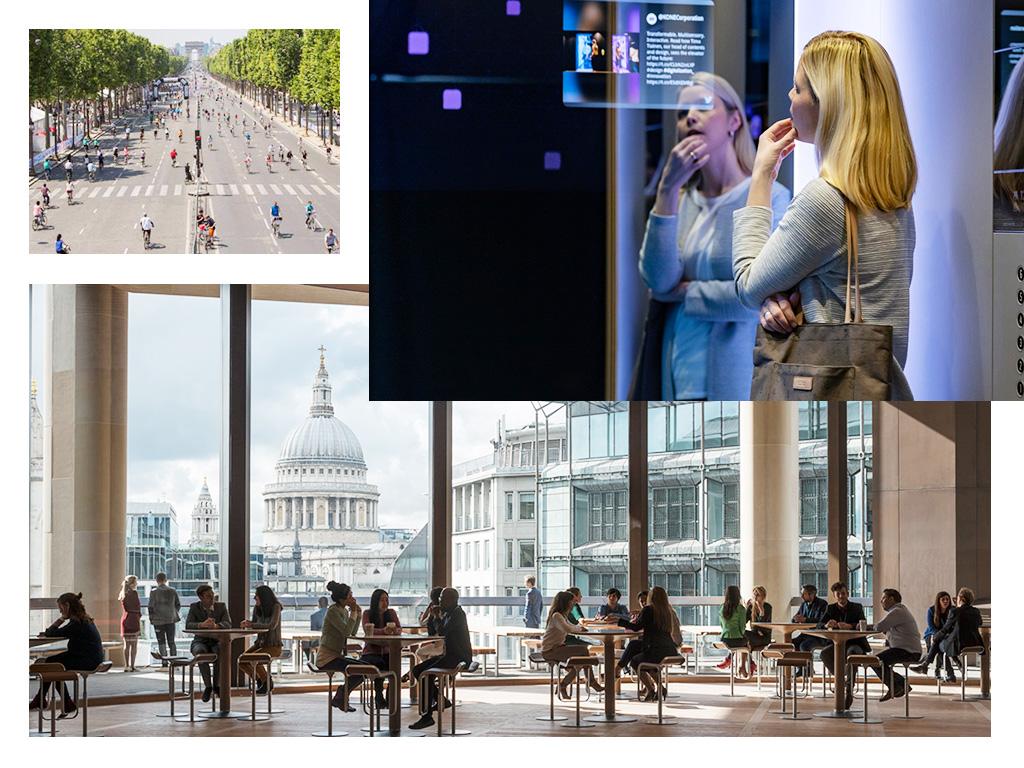Coronavirus: New York entrepreneurs emerge to tell their tale of two cities
For entrepreneurs in the Big Apple, fortunes are determined by government edict.

When New York went into lockdown two months ago, locals bought a lot of wine.
“We were doing New Year’s Eve numbers,” says Lily Peachin, owner of Dandelion Wine in Greenpoint, Brooklyn. “Business is still good.”
A few blocks east of Dandelion is a gym with a makeshift “closed” sign in the window. WillyB Crossfit has been shut since the lockdown began.
“We’re starting to get antsy because the government is telling us we can’t make a living,” co-owner Jared Stein says. “It’s paralysing.”
For New York’s entrepreneurs, the coronavirus pandemic is a tale of two cities, where fortunes are determined by government edict.
The state administration drew the first dividing line in March by classifying businesses either as “essential”, which allowed them to stay open, or “non-essential”, which forced them to close. Wine shops were deigned the former; gyms the latter.

Big business found itself in the same situation. Macy’s, the New York-based department stores operator, was classified as non-essential. It said last week that it expected to lose $US1.1bn ($1.68bn) in the first quarter. There are no government grants to pay for furloughed workers, only loans — and many businesses, especially small ones, have had trouble getting them.
New York Governor Andrew Cuomo drew several more dividing lines early this month when he published his plan for restarting the state’s economy. Non-essential businesses would reopen in four waves, each at least two weeks apart, he said, once targets for containing the virus had been met.
While the city waits to hear the crack of Mr Cuomo’s starting pistol, the silence of lockdown is starting to be broken.
On Tuesday, the opening bell will sound on the trading floor of the New York Stock Exchange after a two-month hiatus. The 228-year-old institution limited itself to all-electronic trading in late March when two workers tested positive for COVID-19.
Even so, there will be many more weeks of stress and strain for tens of thousands of businesses desperate to reopen, with rent payments due and staff waiting to be paid.
It has not necessarily been plain sailing for businesses that avoided closure, either.
Ms Peachin voluntarily shut her wine shop floor to customers to protect staff, switching to pick-up and delivery only. Among other things, she had to buy a car to make deliveries and hired a web designer to get an online shop up and running.

“We’re selling more wine, but that’s different to making more money,” Peachin, 44, says.
The burning question, as with every other metropolis around the world, is how to return to business as usual — if, indeed, the “new normal” can be anything like the old.
WillyB Crossfit closed one of its six gyms during the lockdown. When the others reopen, fitness classes will look different. Gym staff, wearing personal protective equipment, will check clients’ temperatures at the door.
The floors will be sectioned into 2.4m squares to allow for social distancing. Each square will have its own sanitiser dispenser for cleaning hands, kettlebells, barbells and other equipment. Class times will be cut to allow for extra cleaning in between.
“We’ve already seen a complete destruction of revenue and profit,” Stein, 33, says, his frustration evident at a lockdown that could drag on for weeks to come. “Even if we could only break even, we would, so we could fight and claw our way back.”
Nackie Karcher’s hair salon survived the 2008 financial crisis and business was “humming” until March this year, when it was deemed non-essential and closed.
“We were finally in a position where we were a little bit ahead and then this happened,” Karcher, 46, says. “I’m heartbroken by what’s happening in our neighbourhood.”
When her salon, The Karcher, does reopen — July, she thinks — it probably will be at half-capacity. Staff will wear masks, gloves and possibly disposable capes. “It’s going to take a couple of years to get back to where we were.”
Some entrepreneurs have adapted to survive. Jessie Zalla closed her pilates studio shortly after the lockdown began because she could not afford the rent. It had been open for nine years. Instead, she began running classes on Zoom, the video-conferencing platform.
“It’s keeping me afloat,” Zalla, 46, says. “It’s putting on the training wheels for the business as it’s going to grow.” She plans to hire a production team and develop a website, but has no intention to open a new studio.
As pessimism fades and spring turns to summer, New Yorkers are returning to the streets, helping to revive the city. Last week, after two months in limbo, Christian Guzman opened a new coffee shop, his second in north Brooklyn. He laid the floors and built the coffee bar himself after his construction team stopped showing up for work.
“I needed to open because I wasn’t going to be able to pay off my credit card,” says Guzman, 33, owner of Pueblo Querido, who came to America five years ago from Colombia.
He tried and failed to get a government loan to help him to weather the downturn. However, he says business has improved markedly in recent days and is optimistic, despite the difficulties.
“I think everything is going to get better every day,” he says. “This is New York, where people approach life in the best possible way.”
Four steps back to normality
Cuomo is reopening the state region by region. To qualify for reopening, each of the 10 regions involved must first hit seven targets based on levels of COVID-19 hospitalisations, deaths, intensive care capacity and antibody testing.
If a region hits all seven targets, it can proceed with a “phase one” reopening of businesses that carry a lower risk of virus transmission, such as construction, manufacturing and forestry. If all seven targets are still being met after two weeks, the region can reopen “phase two” businesses, which include retailers and estate agencies.
The same two-week wait applies before “phase three” businesses, such as restaurants and bars, can reopen.
“Phase four”, the final group, covers the arts, entertainment, recreation and education sectors.
As of Friday, seven regions in New York State had hit all seven targets, allowing them to proceed with phase one reopenings. New York City had hit only four.
The Times







To join the conversation, please log in. Don't have an account? Register
Join the conversation, you are commenting as Logout